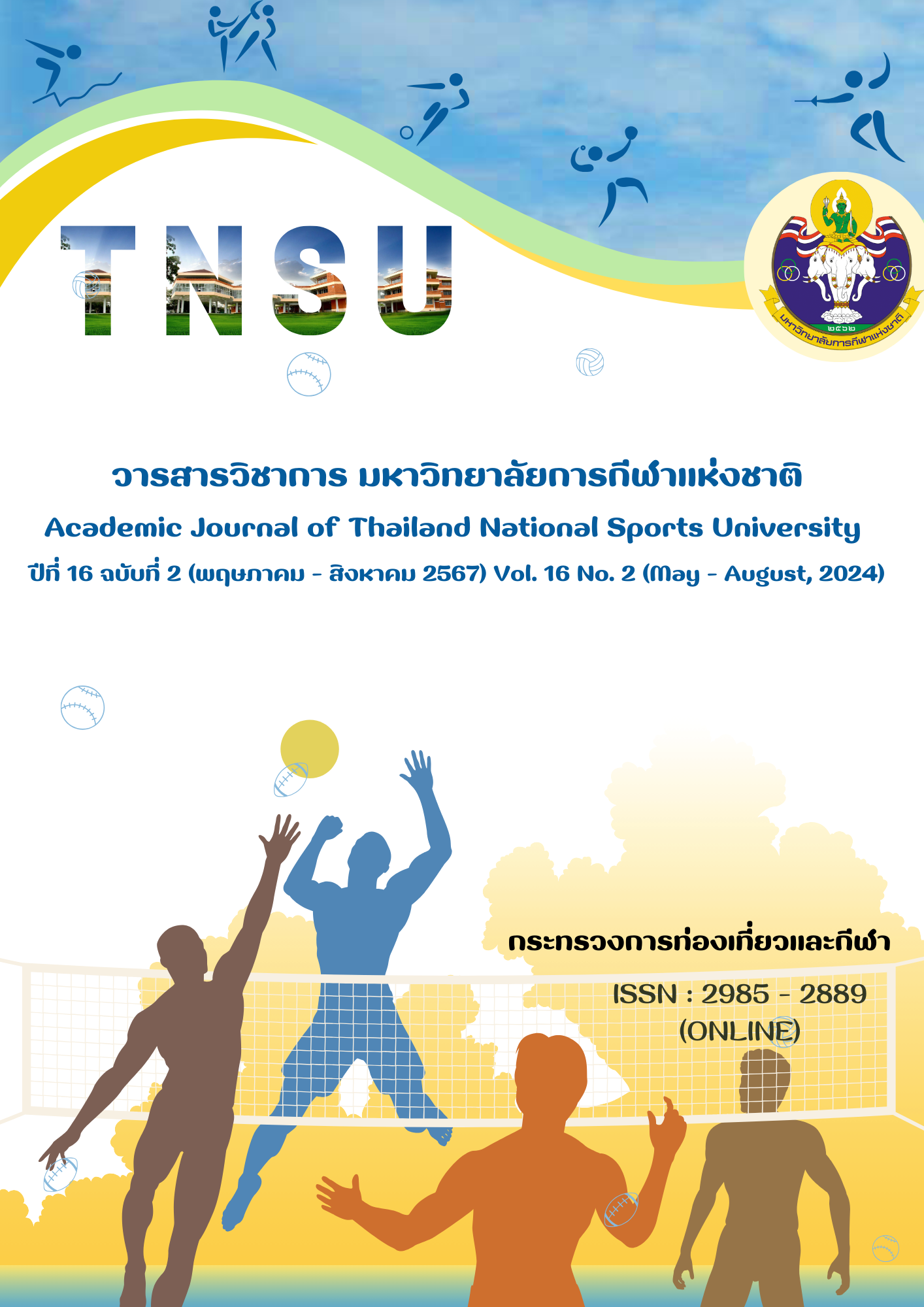EFFECTS OF WATER JUMPING WEIGHT - BEARING TRAINING ON FOOTBALL DRIBBLING AGILITY OF KRABI FOOTBALL CLUB ATHLETES
Main Article Content
Abstract
The purposes of this research were to study and compare the effects of water jumping weight - bearing training on the football dribbling agility of Krabi Football Club (FC) athletes. Thirty Krabi FC athletes were randomly selected. They were tested for football dribbling agility and divided into 2 groups (n = 15/each) by matching method. The control group was trained according to the club's regular training program. The experimental group, after the regular training program, was supplemented with jumping weight - bearing training on the football program conducted by the researcher. The data was statistically analyzed by using mean, standard deviation and t - test. The results showed that 1) the dribbling agility between the two groups of Krabi FC athletes before the training was not different, and 2) there was a statistically significant difference in dribbling agility between the two groups of athletes after 4 weeks and 8 weeks of training at a significant level of .05. In conclusion, the resistance from water jumps squats contributes to muscle strength, speed, endurance and flexibility; and the coordination between nerves and muscles is linked to developing football dribbling agility.
Article Details

This work is licensed under a Creative Commons Attribution-NonCommercial-NoDerivatives 4.0 International License.
The published article is a copyright of the Academic Journal of Thailand National Sports University. The passage appeared in each article in this academic journal is a perspective of each author which is not related to the journal. Each author is required to be responsible for all components of his/her own article. If there are any mistakes, each author must be responsible for those mistakes on his/her own.
References
Boontham Kitpreedaborrisut (2008). Research methods in social science. Bangkok: Chamchuri Products.
Chaninchai Intiraporn. (2001). A Comparison of the effects of plyometric training and plyometric training plyometric training weights with weights and complex training on power development leg muscles (Doctoral dissertation), Chulalongkorn University.
Chaninchai Intiraporn. (2005). The development of acceleration abilities. Science Journal Sport and Health, 6(2), 57 - 64.
Daniel, S., Massimiliano, D. E., Pickering, R. R., Johnston, W. B., Sheehan, L. W. (2018). The effect of water - based plyometric training on vertical stiffness and athletic performance. PLOS ONE Research, 13(12), 1 - 2.
Department of Physical Education (2017). Physical fitness test Football stadium sector – futsal, volleyball and Badminton. Bangkok: Good Evening Things.
Knopf, K. (2012). Make the pool your gym no - impact water workouts for getting fit, building strength and rehabbing from injury. United stage: Ulysses Press.
McBride, Triplett - McBride, Davie & Newton. (2002). The effect of heavy - vs. light - load jump squats on the development of strength, power, and speed. The Journal of Strength & Conditioning Research, 16(1). 75 - 82.
Ratree Rueangthai, Janya Samingwan, Rojana Arpornrat, Suriya Na Nakorn, Siriporn Sasimonthonkul, & Anantasin Ruchirek. (2009). Exercise in water for health. Bangkok: Kasetsart University Press.
Rovilnelli, R. J., & Hambleton, R. K. (1976). On the use of content specialists in the assessment of criterion - referenced test item validity. San Francisco, California: American Education.
Taro Yamane. (1970). Statistic: An introductory analysis (2nd ed.). New York: Harper & Row.
Thavorn Kamutsri. (2017). Enhancement of physical fitness. Bangkok: Media Press Printing House.


